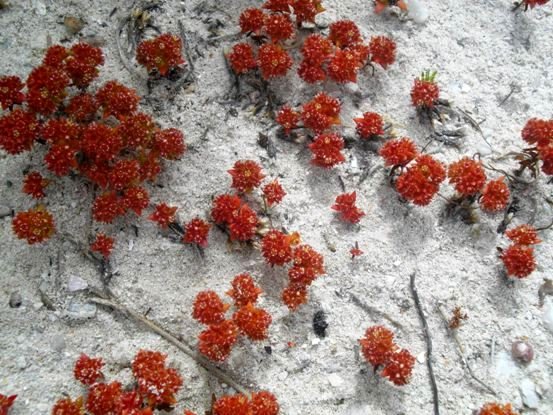Crassula glomerata

Crassula glomerata is a tiny annual, growing to 10 cm; often less as in the photo, rarely 15 cm and branched. It grows rigidly erect stems and small succulent leaves. The leaves are opposite and sessile, tapering to acute tips.
The plant, its leaves, stems and flower calyces, may be green or quite red as seen here on a bare dune by the sea. Its appearance reminds of some tiny mesemb; the Afrikaans common name of brakvygie (brackish mesemb) is no surprise.
Salt from seawater is often this plant’s lot in life, requiring adjustment and resulting in the brakvygie name. Crassula species, like mesembs, are usually small leaf succulents, but their flowers are quite different: Crassula mostly five-petalled, while mesemb corollas consist of many petals, often linear and resembling daisies.
The distribution is in the Western Cape from around Clanwilliam to the Peninsula and along the south coast to the Eastern Cape as far as Gqeberha.
The habitat is sandy places, mostly strandveld and limestone soils, often in exposed situations where it braves wind and sun. This plant is not considered to be threatened in its habitat early in the twenty first century (Privett and Lutzeyer, 2010; Bond and Goldblatt, 1984; iSpot; http://redlist.sanbi.org).

